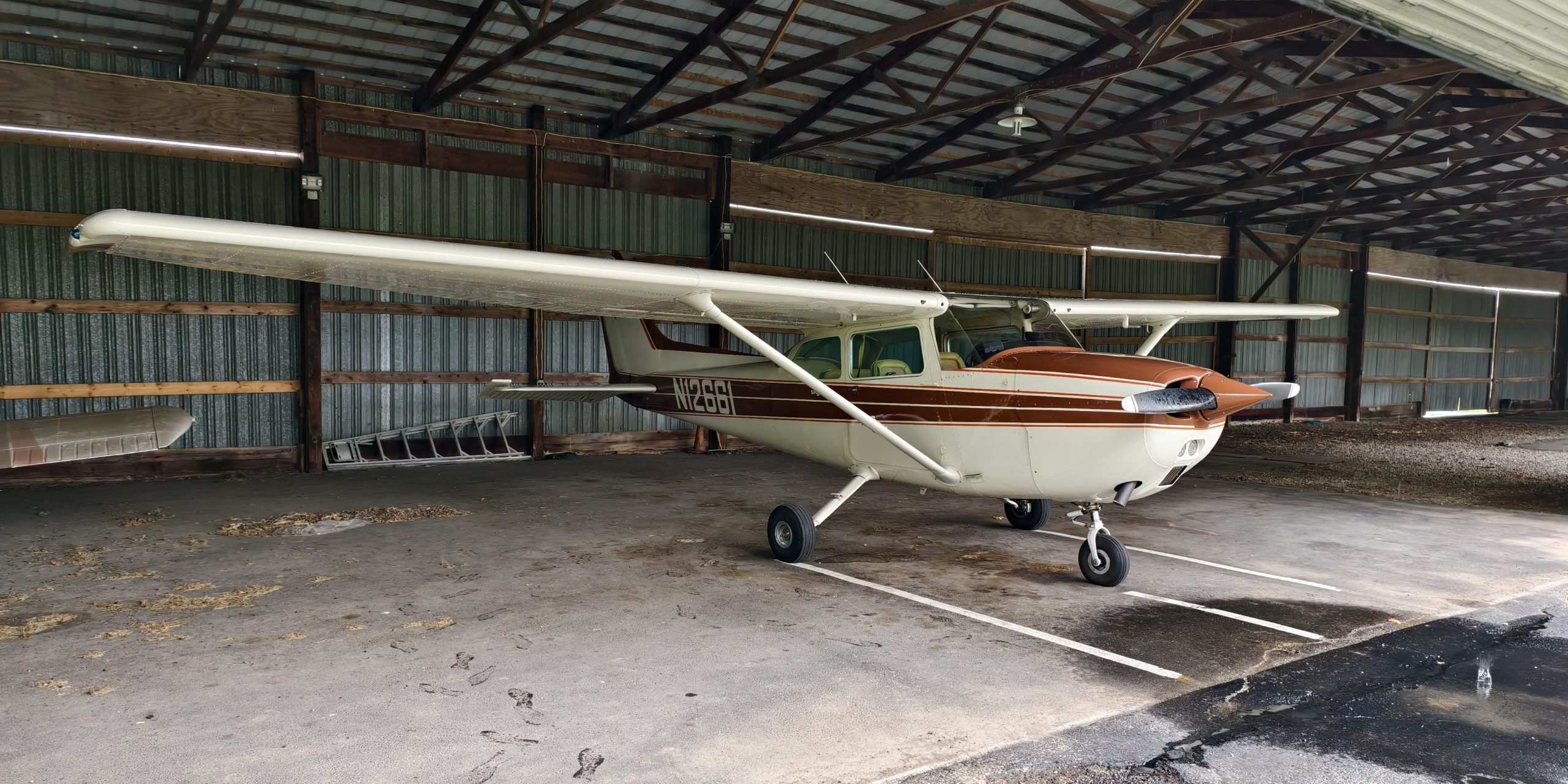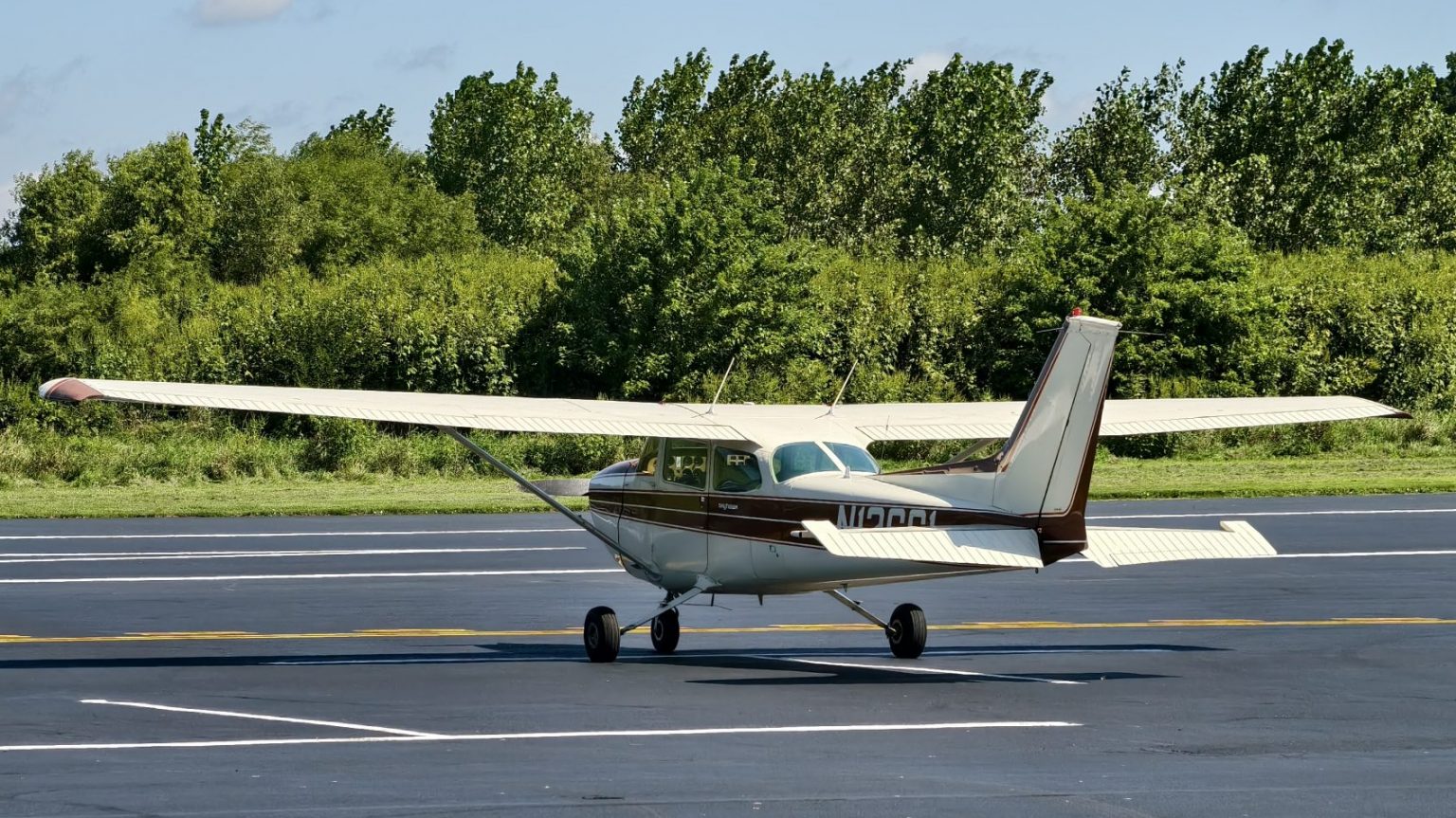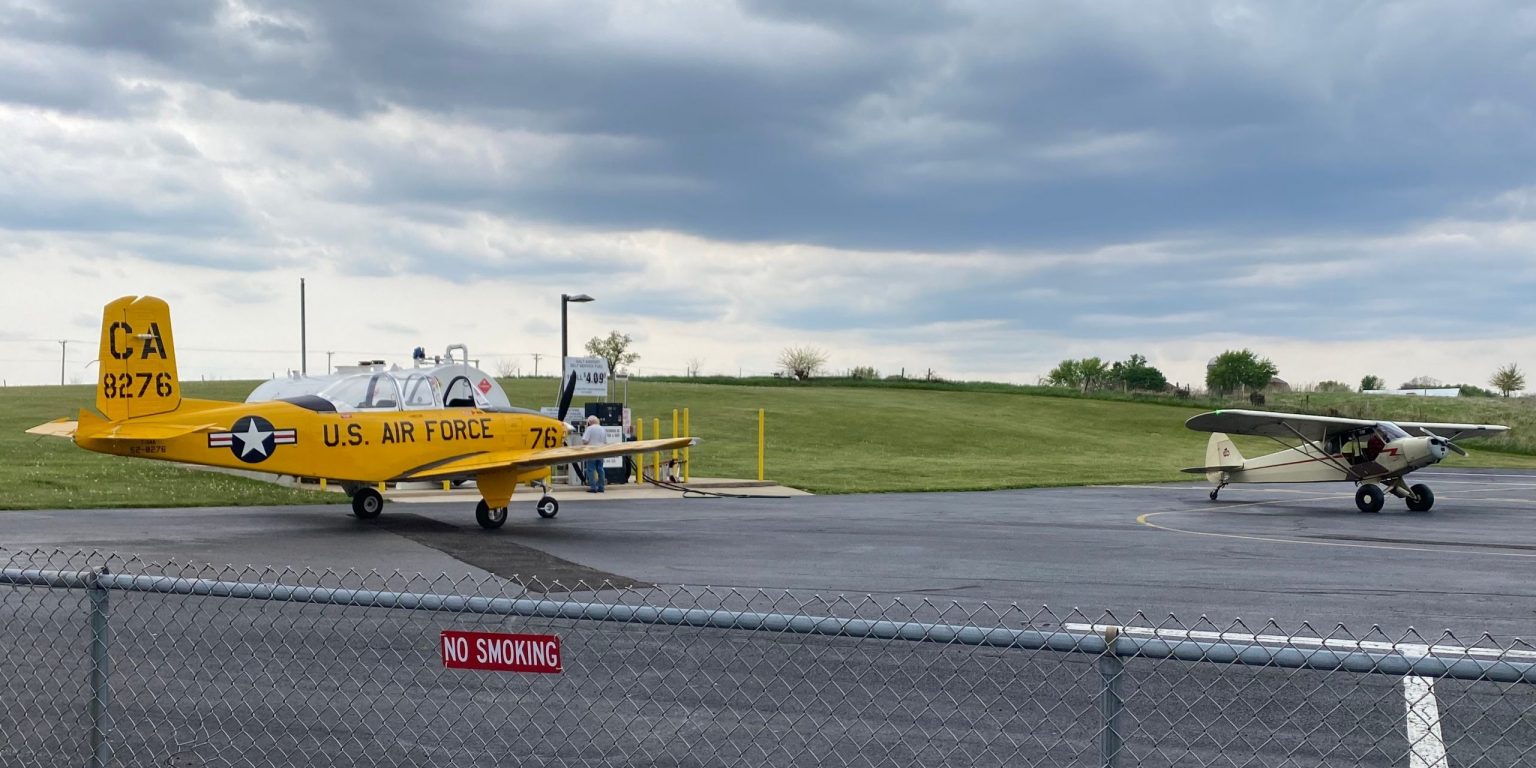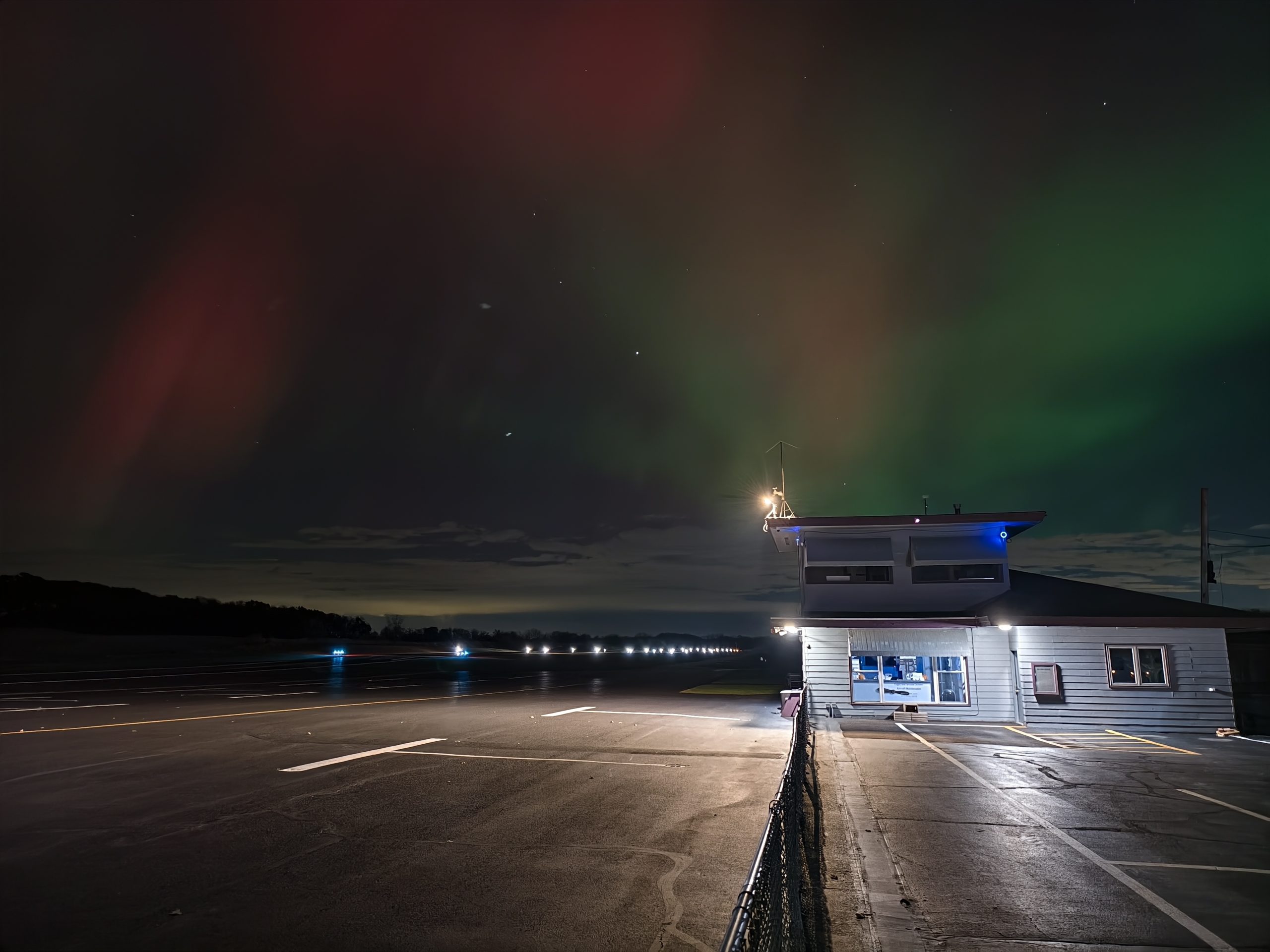Flying a plane is a vastly different experience from that of any road vehicle. All of your limbs and most of your senses are hard at work to keep the aircraft coordinated and to keep the flight safe in three dimensions of space. Also, unlike your car, there is no pulling over when the going gets tough. Instead, your skill and your training get you back on the ground again. Yet, last weekend, I got to experience my hardest flight yet when I flew through the roughest winds I’ve ever felt in a small plane, and it taught me a great lesson about cars and life.
Back in August, I wrote about how I finally got back into the left seat of a plane to get my pilot’s license. I first tried to get my license in 2020, but both finances and life got in the way. Sadly, it would take me four years to give flight training another go. This time, I’m going all the way, and nothing can stop me.
Progress has been both fast and slow. It’s slow because, due to scheduling conflicts and the fact that my instructor got promoted to an airline, I have been flying once a week at most. It’s also fast because, as my instructor said before she went to SkyWest, I apparently fly like there wasn’t a whole four-year gap. Per her, I also took instruction like a sponge, and she generally only had to tell me something once. My new instructor seems to be equally optimistic.

I have also fallen deeply in love with the trainer aircraft, N12661, a 1973 Cessna 172M. I feel like I’ve built a good rapport with this aircraft, not unlike how you would with your favorite car. I’m learning ol’ 661’s quirks, and I’ve gotten to be the first person to fly her on some days. I’ve even learned the correct way to jiggle the key to get the plane’s darned luggage door open. I also love my local airport, Galt (10C), and its tight-knit community.
As such, I have reached the final lesson before my first solo flight (where you’re all by yourself in the plane), and that lesson would have been successful on Saturday had it not been for that invisible force known as wind shear.
A Fun Lesson

Saturday was generally a good day to fly. There was barely a cloud in sight, and visibility was perfect. Even the temperatures were great at a very comfortable 67 degrees Fahrenheit. What wasn’t so great was the wind. The weather report called for winds at 230 degrees at 11 knots. This wasn’t anything all that spicy, and I’ve flown in winds like that before. The gusts of 16 knots also weren’t all that surprising. Most of this wind was right “down the pipe,” too, which meant it was pretty close to runway heading.
This meant that takeoffs were really fun. The airspeed indicator raced up to rotation speed in only seconds, and it’s glorious lifting off long before I normally would. That said, my flying wasn’t nearly as tight in this wind as it normally is. Here are my breadcrumbs from Foreflight:

The final lesson before my solo involves landing the aircraft in different flap configurations (the flaps are a part of the wing’s trailing edge and extend out and down, increasing lift for slow flight). That part of the lesson was not new to me, but it ensures I have my landings nailed down before my first solo. What was new was learning how to do forward slips. A slip is pretty awesome. To do it, I gave the aircraft full left aileron and full right rudder. It’s an intentionally uncoordinated flight, and it’s great for bleeding off excess altitude, which you might need to do to safely land in an emergency.
To an observer on the ground, a plane that’s in mid-slip looks like it’s drifting like a car. My favorite example of a slip in an aircraft is Air Canada Flight 143, the famous Gimli Glider. Here’s a short video set to Eurobeat:
An Invisible Force
Doing these slips felt awesome, but remember how I said that the wind wasn’t so great? Well, that’s because at about a minute from the usual touchdown point on runway 27 at Galt Airport, there was an area of wind shear. Here’s what the Federal Aviation Administration says about wind shear:
Wind shear is a change in wind speed and/or direction over a short distance. It can occur either horizontally or vertically and is most often associated with strong temperature inversions or density gradients. Wind shear can occur at high or low altitude.

You can get wind shear from different sources, like thunderstorms, temperature inversions, or from surface obstructions like buildings, mountain passes, and more.
The type of shear that perhaps concerns pilots the most is vertical shear near the ground. If you encounter wind shear near the ground, the sudden change in the wind can dramatically alter lift in a very short period of time. This is bad because the aircraft is going to be near the ground with not a lot of altitude and not a lot of airspeed to spare.

However, wind shear events aren’t unrecoverable. You can compensate for the momentary loss of lift by increasing thrust and pulling the aircraft’s nose back up. If the shear happens early enough, you can get right back onto your glideslope and land safely. This is what happened throughout much of my training on Saturday. I would hit shear, respond with throttle and pitch, and hit my mark on the runway, anyway.

The Real Challenge
However, the intensity of the shear increased during my flight. During one landing, I recovered from the shear, but messed up my landing. I accidentally slammed the Cessna’s mains (its rear wheels) on the ground hard enough and with enough speed that the aircraft bounced up and started flying again.
Now, here’s where some landings can go wrong. You might feel inclined to just try to get the aircraft on the ground again. I mean, you’re already at the runway! However, trying to land after a bounce like this could lead to something known as a porpoise landing. In your desperate attempt to get the aircraft on the ground again, you could end up impacting the nosewheel first, and the aircraft can respond by rebounding back into the air. This process can repeat with increasing amplitude, resembling how a porpoise swims, until the aircraft finally crashes.

Porpoise landings aren’t just limited to students, either. Commercial pilots have found themselves in a porpoise landing, too. Of course, the best way to prevent a porpoise landing is to identify the risk and perform a go-around before it happens. In my case, the bounce was high, and my airspeed was also high, and I believed the best plan of action was to just scrap the landing and try again. There’s no shame in flying around the airport to try a landing again. Sure enough, my next landing went off just fine.
On my second-to-last landing of the day, I encountered the shear again, but this time it was especially rough. It felt as if the wind had entirely disappeared from under the Cessna, and it briefly felt like the aircraft had fallen like a rock. When the aircraft finally stabilized, I was turned quite a bit and faced a row of trees straight ahead. I heard the faint call of the stall horn just activating. Since I was about level with the trees, there was less than 100 feet between me and terra firma.

There are really only two decisions that could be made here. I could have tried to save the landing by trying to straighten out the aircraft with the little speed and altitude that I had remaining. Or, I could have punched the throttle and gotten out of there. In a split second, I chose the second option. Why? Because, as I said earlier, there’s no shame in trying again. The plane was still flying. Instead of trying to wrestle it to the ground, I chose to throttle out, gain airspeed, pitch up, and get out of there. I initiated my go-around a second before my instructor even managed to utter “go-around.”
A Life Lesson
In the debrief later on, my instructor said that I made all of the right decisions. It’s safer to do a go-around than to try to save a bad landing. It’s safer to do a go-around when wind shear no longer makes your approach stable. The plane is still flying, and you have an engine, so fly the aircraft.

Sadly, if you read enough accident reports or watch enough Mentour Pilot or Pilot Debrief, you’ll learn that, sometimes, recoverable events end up in tragedy. Some experienced aviators attribute some of these crashes to “get-there-itis,” while the FAA calls it Plan Continuation Bias. Basically, you’re so determined to reach your destination that you ignore or downplay risks. Sometimes, you get lucky. Other times, not so much.
Examples of this phenomenon include continuing a landing after a go-around should have been performed, refusing to divert from an airport that is currently incompatible with a safe landing, or intentionally flying into weather. Sometimes, pilots may make a bad call because they want to impress someone in the aircraft, don’t want to inconvenience someone in the aircraft or on the ground, or don’t want to miss whatever important event they’re flying to. Maybe you might feel, perhaps even unconsciously, that the runway is right there, so you should make it, anyway.

Thankfully, “get-there-itis” has remedies, from good and realistic pre-flight planning to ensuring that you deal with problems as they arise rather than ignoring them. In my case, I chose not to continue a dangerous landing and got out of there.
What’s awesome is that this is applicable to cars and life, too. Have you ever been in a situation where you’re about to miss an exit? A lot of people feel inclined to get to that exit and don’t think about the potential consequences of sailing their car across several lanes of traffic.

But just like with my landing, you don’t actually need to get to that exit. You can always take the next exit or loop back around and try again. Will you be late? Sure, but you’ll also be alive.
It’s the same deal when you’re feeling tired while driving or you’re driving in inclement weather. Sure, you might be an hour from home, but you’re already dozing off. It’s safer to pull over, saw some logs, and then finish the drive when you’re more refreshed. If you’re driving on a snow-covered highway with low visibility and stuck cars all over, there’s no need to speed.
Honestly, you can apply this logic to really anything in life. Don’t let your desire to get to a place or do a certain thing allow you to get so much tunnel vision that you ignore red flags.
Be Safe, Have Fun

The weird thing is that I have always sort of known this. I have looked into more airplane accident reports than I’m willing to admit. My favorite YouTubers have talked about crashes caused by unfortunate mistakes more often than I can count. I have been trained on how to avoid potentially deadly errors. Yet, it’s different learning about what to do than it is actually getting into that situation and executing it. Honestly, experiencing such a thing for yourself can change your whole outlook.
Otherwise, I hope you drive, ride, boat, or fly safely! So long as the weather and scheduling hold out, I am sure you will probably see a video and photos of me flying a plane solo for the first time before Christmas. This journey has been five years in the making, and my dream will soon come true.
If you ever find yourself in a situation where your desired outcome is no longer guaranteed, and forcing it can be dangerous, just do the safe thing. There is no shame in going around. People should understand that you had to take the safe option. Getting somewhere late is better than crashing your car, plane, or motorcycle because you were laser-focused on the destination. Don’t let “get-there-itis” win.
Top graphic image: Mercedes Streeter









My Mom taught me to never be afraid to make a u-turn. Mercedes, I really enjoy your articles about your pilot’s license journey. We’re all rooting for you!
Galt Airport! I grew up spending my summers on Wonder Lake nearby. We used to stop at Galt on Saturday afternoons to look at the planes and watch a few landings. There was a nice Christen Eagle there back in the day. Good memories.
Hoping you have an enjoyable solo. You will notice a more noisy and better performing 172 when the other person steps out.
In my piloting experience, saving a landing never seems to save much. I just go around and try again.
Wedge Antilles is still with us because he knew to pull out of that Death Star trench when it wasn’t safe. Great stuff to keep in mind when I’m bonsai-ing womprats in my T-16 back home.
Rebel propaganda.
I find your lack of faith disturbing.
I’d say the “get-there-itis” certainly fully applies to truck drivers who lose their brakes coming down mountain passes, and don’t use the fricking runaway truck ramps, sometimes resulting in fatal crashes
Watched the Gimli clip – that is the downright ballsiest move I have ever seen. Forget brass ones, this Captain’s were adamantium.
Flying low
When a voice on the radio
Says do you know
You were flying much to low
There’s danger in the air
But I don’t care
Oh no.
No one there
To hold your hand
Nobody
To change your plans
Flying solo
Your life is in your hands
–Naked Eyes
When you mentioned “drifting” I immediately thought of the Gimli Glider.
“Throttle out” works in rally too. ;^) And the number of times I’ve been behind someone swerving across 3 lanes and a median to take that exit, well it went up by one yesterday.
I learned in my 20’s to stop telling people they were missing their exit, turn, or whatever, until after they had passed it and had to turn around. One too many close calls with friends pulling off similar stupid moves because of it.